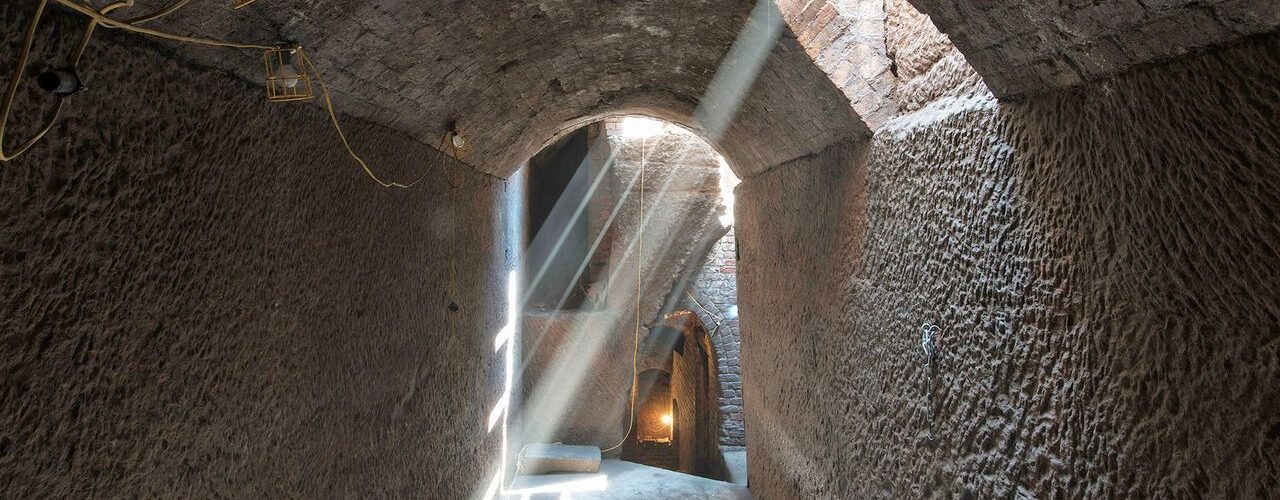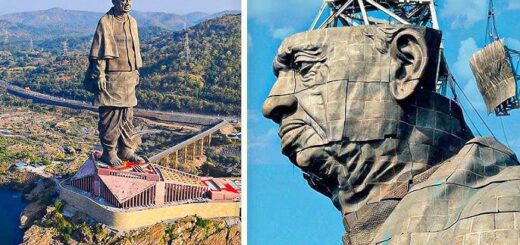Discovery of Underground Tunnel

Tunnels and underground excavations, horizontal underground passageway produced by excavation or occasionally by nature’s action in dissolving a soluble rock, such as limestone. A vertical opening is usually called a shaft. Tunnels have many uses: for mining ores, for transportation including road vehicles, trains, subways, and canals and for conducting water and sewage. Underground chambers, often associated with a complex of connecting tunnels and shafts, increasingly are being used for such things as underground hydroelectric-power plants, ore-processing plants, pumping stations, vehicle parking, storage of oil and water, water-treatment plants, warehouses, and light manufacturing; also command centers and other special military needs.
Ancient Tunnels
It is probable that the first tunneling was done by prehistoric people seeking to enlarge their caves. All major ancient civilizations developed tunneling methods. In Babylonia, tunnels were used extensively for irrigation; and a brick-lined pedestrian passage some 3,000 feet (900 metres) long was built about 2180 to 2160 BCE under the Euphrates River to connect the royal palace with the temple. Construction was accomplished by diverting the river during the dry season. The Egyptians developed techniques for cutting soft rocks with copper saws and hollow reed drills, both surrounded by an abrasive, a technique probably used first for quarrying stone blocks and later in excavating temple rooms inside rock cliffs. Abu Simbel Temple on the Nile, for instance, was built in sandstone about 1250 BCE for Ramses II (in the 1960s it was cut apart and moved to higher ground for preservation before flooding from the Aswān High Dam). Even more elaborate temples were later excavated within solid rock in Ethiopia and India.
Technological Exploration
Penetrating Radar
Cutting-edge technology, such as ground-penetrating radar, has revolutionized underground exploration. This section explores how these tools enable scientists to penetrate the Earth’s crust, providing detailed insights into the subterranean landscape.
LiDAR (Light Detection and Ranging)
LiDAR technology plays a pivotal role in mapping and visualizing underground structures. We delve into how LiDAR aids in creating three-dimensional models, facilitating a more comprehensive understanding of the tunnel networks.
Old Passages
Archaeological discoveries reveal tunnels dating back centuries or even millennia. This section explores how these findings contribute to our understanding of ancient cultures, civilizations, and the historical context in which these tunnels were constructed.
Tunnels War Related
Some tunnels have historical significance tied to wars and conflicts. Investigating these subterranean passages unveils the strategic and tactical aspects of military operations throughout history.
System of Basic Tunneling
Tunnels are generally grouped in four broad categories, depending on the material through which they pass: soft ground, consisting of soil and very weak rock; hard rock; soft rock, such as shale, chalk, and friable sandstone; and subaqueous. While these four broad types of ground condition require very different methods of excavation and ground support, nearly all tunneling operations nevertheless involve certain basic procedures: investigation, excavation and materials transport, ground support, and environmental control. Similarly, tunnels for mining and for civil-engineering projects share the basic procedures but differ greatly in the design approach toward permanence, owing to their differing purposes. Many mining tunnels have been planned only for minimum-cost temporary use during ore extraction, although the growing desire of surface owners for legal protection against subsequent tunnel collapse may cause this to change. By contrast, most civil-engineering or public-works tunnels involve continued human occupancy plus full protection of adjacent owners and are much more conservatively designed for permanent safety. In all tunnels, geologic conditions play the dominant role in governing the acceptability of construction methods and the practicality of different designs. Indeed, tunneling history is filled with instances in which a sudden encounter with unanticipated conditions caused long stoppages for changes in construction methods, in design, or in both, with resulting great increases in cost and time. At the Awali Tunnel in Lebanon in 1960, for example, a huge flow of water and sand filled over 2 miles of the bore and more than doubled construction time to eight years for its 10-mile length.








